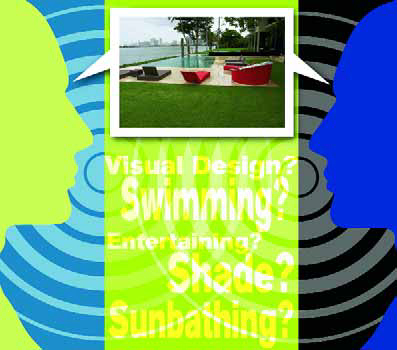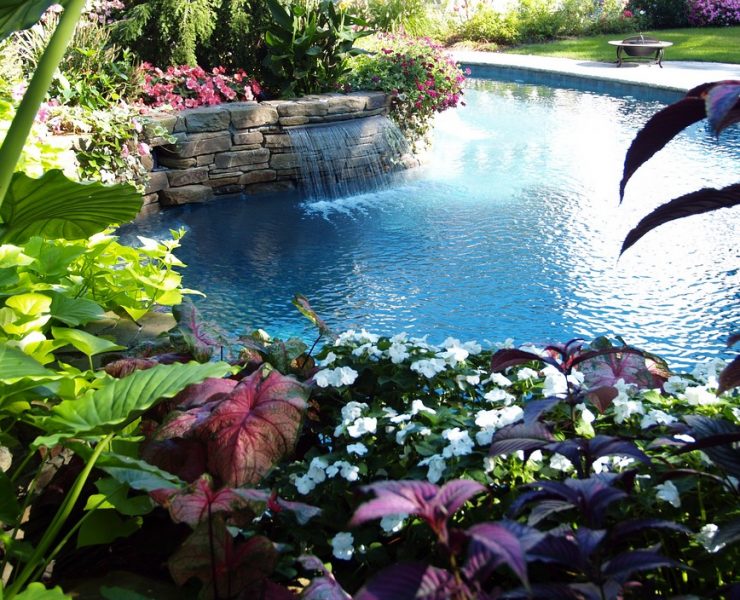pool design
With watershapes, sometimes the most straightforward forms work out best. That was definitely the case with this project, a swimming pool I designed and built for a beach club near my home in Guanacaste, Costa Rica. The club is part of an overall resort property known as Reserva Conchal, an utterly spectacular spread covering 2,500 acres on scenic Playa Conchal on our country’s north Pacific coast. I first became involved with the resort’s owners about ten years ago, when they were completing their first phase and I helped them solve some problems with a pool that had been built by another firm. Since then, as the owners’ master plan has gradually unfolded, I’ve worked with them on a number of pools in various spots around the huge property, including watershapes for various condominiums and other facilities. My involvement with their newly constructed club has been, by far, the most
Although the details of a well-organized equipment pad are seldom the object of as much appreciation as are the purely aesthetic touches on a project, they are no less important to its success, says Paolo Benedetti. Here, in the latest installment of his series on design and engineering solutions to common construction challenges, he offers advice on a key part of pad organization – that is, the management of its wiring connections. With today’s watershape circulation and support equipment becoming ever more complicated, there’s an increasing need to make equipment pads as uncluttered as possible. With that in mind, I’ve developed a few simple wiring strategies that let me keep things neat, organized and serviceable. It requires some improvisation, unfortunately, because for all the efforts manufacturers have undertaken to improve product performance, in many cases they have failed to make the wiring task as easy as it should be. A classic example is found in
Places just below the earth’s surface have been a resource for heating and cooling basically since the planet took shape. Ever since, all sorts of creatures have taken refuge from excessive heat or extreme cold by burrowing into the soil, and it’s no accident that some of the earliest examples of human self-expression have been found in caves deep below the surface. With pools and spas, however, up until recently there’s always been a legitimate question about whether this timeless heating/cooling approach was workable on any sort of cost-effective basis. If recent projects designed by my firm, Aloha Pools Design Studio (Franklin, Tenn.) are any indication, that question has now been answered with a resounding yes. On the face of it, that answer seems obvious. After all, the U.S. Department of Energy says that geothermal heating is more cost effective than a 95-percent efficient gas heater – and that the same would be true even if 100-percent efficient gas heaters were available. Only recently, however, have the suppliers of these systems reached a point where their equipment is
Swimming pools don’t always need to be complex or innovative to be beautiful. In fact, I’d like to suggest that even the simplest of design programs, when handled well by the watershaper, can lead to outstanding results. The reasons are obvious and well known: With water, we manage the world’s most beautiful and alluring design material. If we do a good job, put that water in the right place and build our structures well, the potential for achieving gorgeous results is almost always within reach and we organize reflections, flows, sounds, hardscape and plants. If all of those elements are in control and integrated into the same thoughtful program, in other words, even the most basic of projects can be so aesthetically on target that it will elicit strong emotional responses. All of these factors were in play with the small pool discussed here: With just 800 square feet of surface area, it sits in the front yard of a modest but attractive home in the Five Towns area of New York’s Long Island and is distinguished by
As a rule, I avoid working for contractors: I’ve found that far too many of them spend so much time worrying about the bottom line that they lose sight of the fact that their clients want quality rather than compromises. I’ve also found that their general caution is often at its worst when it comes to watershapes: Even though these structures may be key components of the overall project, they tend to come along late in the process and are all too often seen as places where corners can be cut to meet overall budget goals. Frankly, I’ve never liked being treated as a pawn or second-class citizen, so I avoid these situations like the plague. Instead, I typically work directly for homeowners and refuse to subordinate my part of a project to the whims of another contractor. Any worthwhile rule, however, has
Among the wonderful benefits of working in the custom watershaping business is that you never really know what sort of projects will wander into view. Through the years, we at Live Water Creations of Santa Rosa, Calif., have certainly participated in developing and executing some unusual designs, but I can honestly say that working on one that included a huge, beautiful steel pyramid topped by a deep-space telescope was something that had yet to come our way. And it would have stayed that way had I not received a call from John Anderson of Pools by Rapp, another firm here in Santa Rosa. We’ve collaborated on other projects in which our firm has built ponds or fountains to go along with pools and spas he’s done. In this case, he was installing a lap pool and wanted our help in what he could only describe as an extremely unusual watershape. The client said he had just built a beautiful contemporary home and, as an astronomy buff, wanted to complete the package with
In the world of concrete science and application, innumerable variables have an influence on whether a concrete installation is successful or not. These include but are not limited to the skill of the applicator, the suitability of the mix design, the temperature at the time of application, the equipment used, the water-to-cement ratio and the size of the aggregate. For all the seeming complexity, however, the nature of the material itself invests the process with a few immovable facts. One of these directly undermines the swimming pool industry’s “standard” that calls for a compression strength of 2,500 pounds per square inch for pneumatically placed concrete (that is, gunite or shotcrete). It’s not because the standard is inadequate per se; rather, it’s because
Root Design has always focused on developing environments that delight, inspire and occasionally surprise clients, but the project seen in this, the first of two articles, may well be the company’s most elaborate to date. Here, Ben Dozier and Michael Percy describe what went into designing and building across the entire site, including the multiple watershapes that helped transform this estate into an oasis filled with plants, light, sounds and water. Although it doesn’t always work out this way, the best-case scenario for us at Root Design (Austin, Texas) is to accept full responsibility for all exterior spaces of a given property, from the footprint of the house out to the property lines. In these situations, our team is able to establish designs with wall-to-wall continuity in response to the environment, the architecture and our client’s wishes. We commit ourselves in these circumstances to taking homeowners and their guests on a journey, starting the moment they enter the property and moving all the way through to the yard’s farthest reaches and all the spaces in between. Along the way, they’ll enter a variety of small or large vignettes, conceal-and-reveal discoveries, dramatic focal points and multiple rewarding destinations – each conceptually linked as a coherent “whole.” In this case, we were called upon to
It’s no secret that swimming pools have come a long way in recent years and are now graced with all sorts of features, functions and materials that, once rare or non-existent, have now become common and (in some cases) familiar. For all of that innovation, however, there really hasn’t been what one might call a re-imagining of the product or any fundamental reassessment of its nature. In fact, as we and certainly some prospective clients see it, there are problems with pools as they’re traditionally designed and built. For one thing, bathers with physical limitations have difficulty getting in and out of the typical pool. For another, pools take up a good bit of physical space, which is increasingly an issue as






















